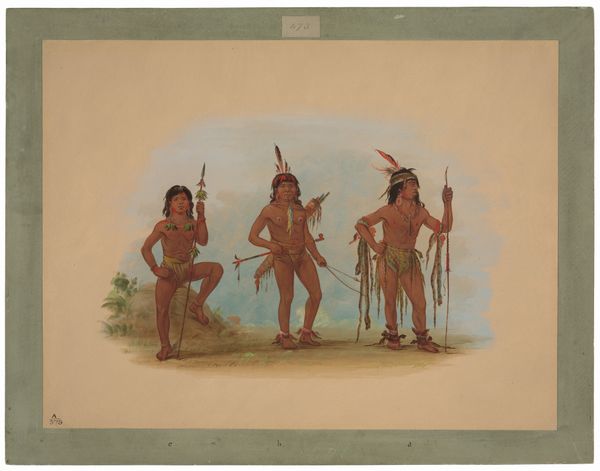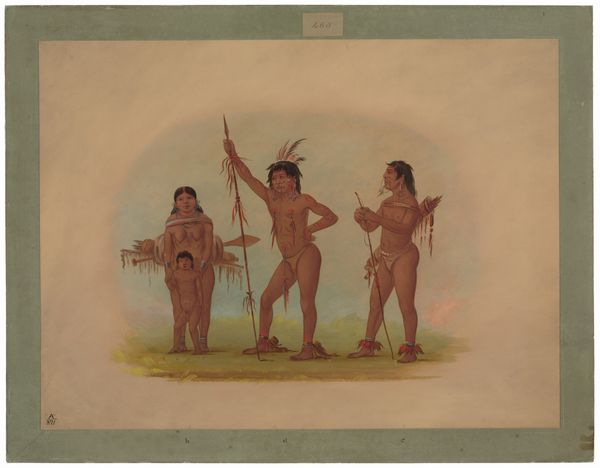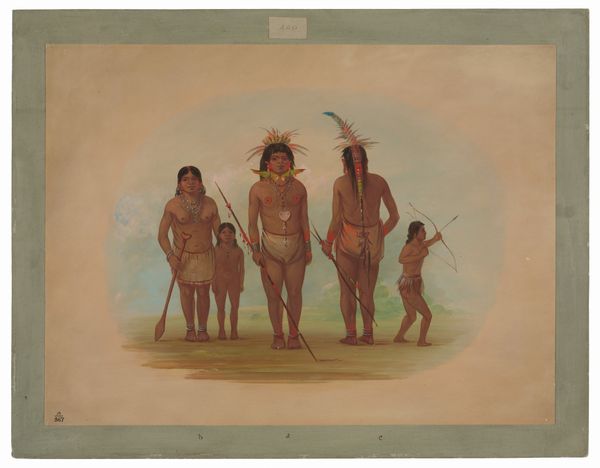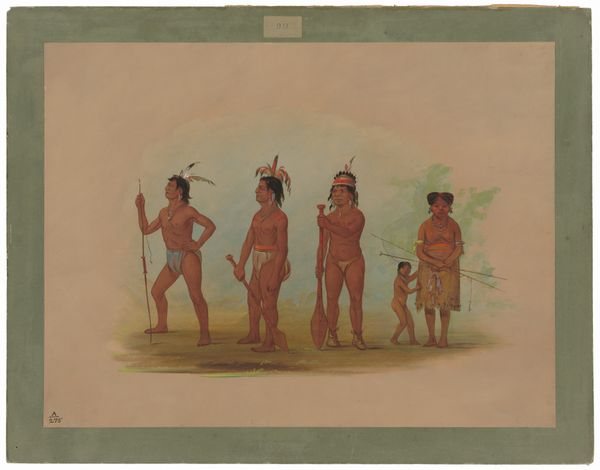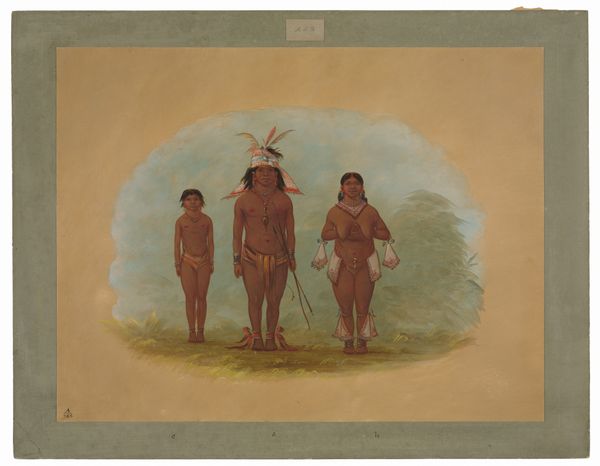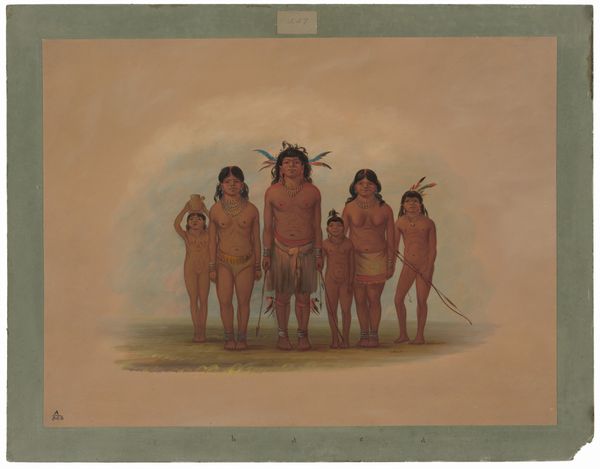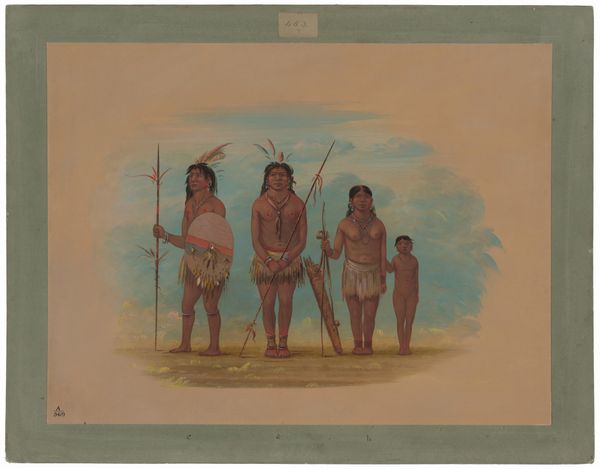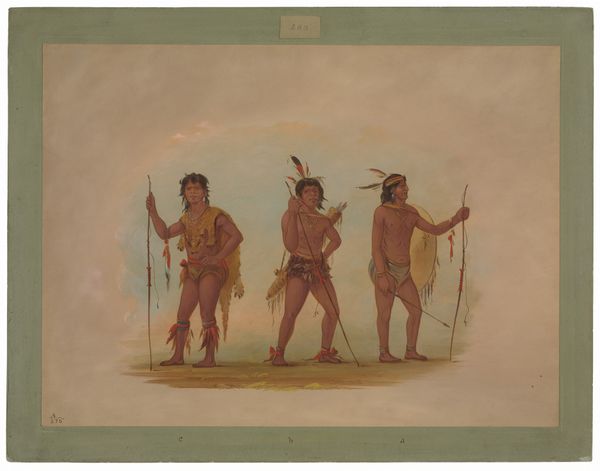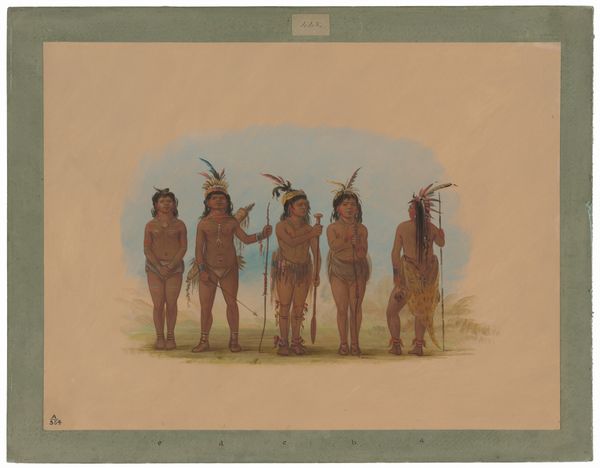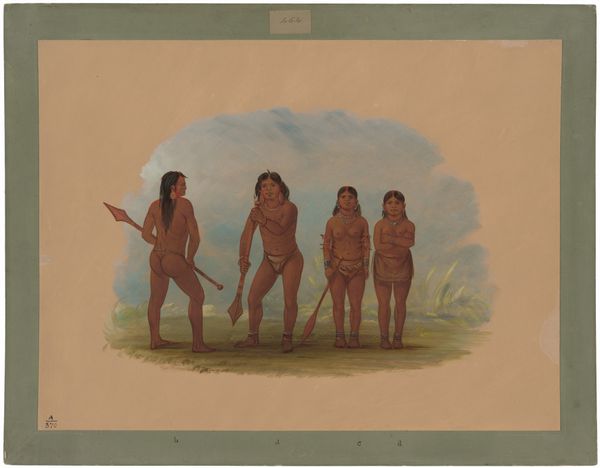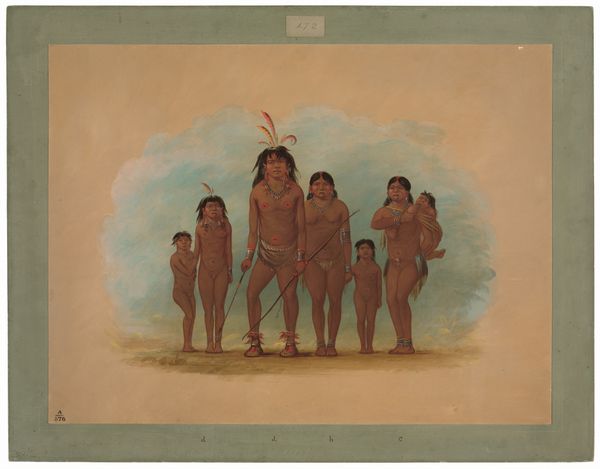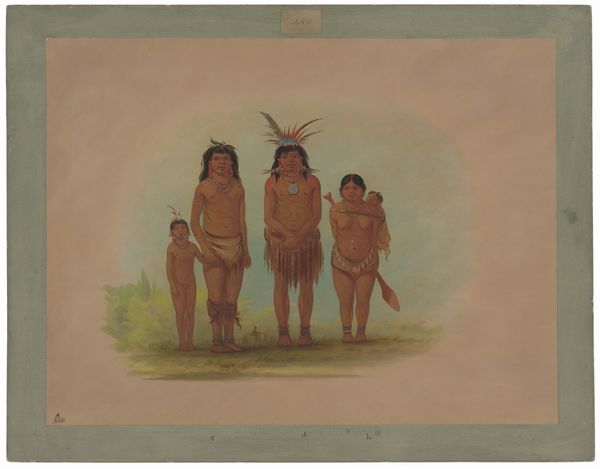
painting
#
portrait
#
water colours
#
painting
#
watercolor
Dimensions: overall: 46.7 x 62.5 cm (18 3/8 x 24 5/8 in.)
Copyright: National Gallery of Art: CC0 1.0
Editor: Here we have George Catlin's watercolor, "Klahoquaht Chief, His Wife, and Son," created sometime between 1855 and 1869. It's a strikingly direct portrayal, almost like a photographic record, but there's also a subtle idealization at play. What do you see in this piece? Curator: Beyond its surface representation, this portrait embodies the complex intersection of representation, power, and identity. Catlin, as a white artist, was creating images of Indigenous people during a period of immense cultural disruption and colonial expansion. How does this context influence our understanding of the figures’ presentation? Editor: It makes me wonder how much agency they had in how they were portrayed. Were they active participants in the creation of this image or subjects being documented through a Western lens? Curator: Precisely! This raises vital questions about authorship and the power dynamics inherent in the act of portraiture, particularly across cultures. Considering the displacement and erasure of Indigenous cultures happening at the time, do you see elements of resistance or resilience in their portrayal? Editor: Their direct gazes, maybe? They're not passive, they seem to be asserting their presence. And what about their traditional clothing and items of status - are those declarations too? Curator: Absolutely. Those details speak to cultural continuity and pride, a visual assertion of their identity amidst a context of forced assimilation. Consider too, how displaying such works then contributed to forming certain perceptions that affect policy to this day. How can we re-interpret such portraits and counter existing narratives? Editor: It really forces us to confront the biases embedded in historical documentation. Thank you for guiding me to interpret all these issues with greater attention to the role of both the artist and the sitters. Curator: My pleasure. By questioning these power dynamics, we can foster a more equitable understanding of history and representation in art.
Comments
No comments
Be the first to comment and join the conversation on the ultimate creative platform.
